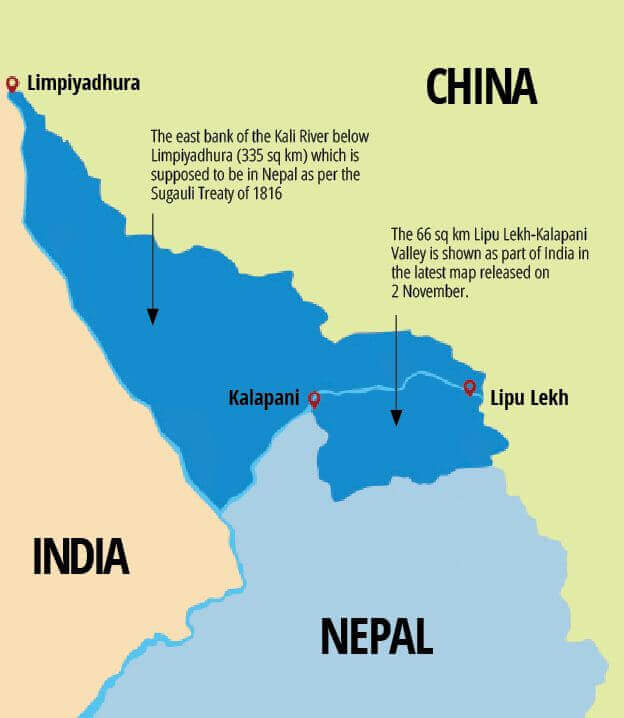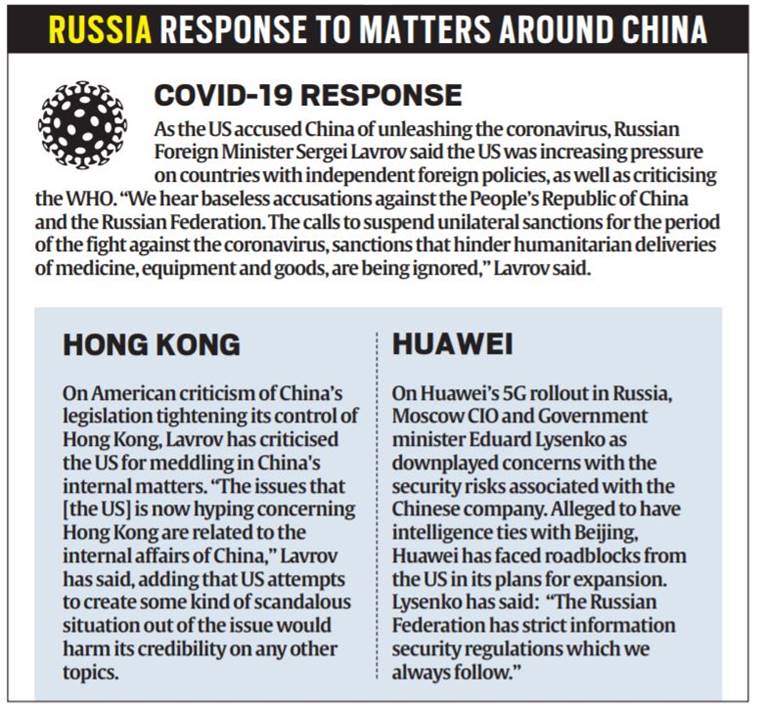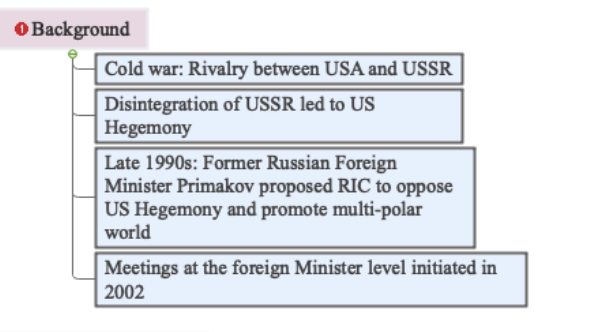Contents
- A way out of undelineated borders
- Clarifying SIDBI’s Role
- Don’t discriminate against non-resident migrants
- Russia: Key player amid tension between India, China
A WAY OUT OF UNDELINEATED BORDERS
Focus: GS-II International Relations
Historical facts
- The Treaty of Sugauli in 1815-16, which ended the Anglo-Nepalese War, stipulated that “the Kali River” would mark Nepal’s western border with the British East India Company.
- The drainage of the Kalapani and Lipulekh was considered wholly within British territory, and it was stated that a short way below the springs, the Kali formed the boundary with Nepal.
- Nepal later ‘extended a claim to the Kuthi valley further to the west, stating that the Kuthi-Yankti stream, the western branch of the head waters, should be considered the main Kali river’.
- The matter was considered settled as only the lowland lying between the Kali and Gorakhpur that were ceded in 1815 were restored to Nepal by the Treaty of 1860.
Agreed tri-junction

- The 1954 Trade Agreement between India and China mentions Lipulekh as one of the passes that could be used for trade and pilgrimage traffic; a police post was established by India at Kalapani in 1956.
- The China-Nepal Boundary Treaty, October 5, 1961, in its Article 1 states: “The Chinese-Nepalese boundary line starts from the point where the watershed between the Kali River and the Tinkar River meet the watershed between the tributaries of the Mapchu (Karnali) River on the one hand and the Tinkar River on the other hand.”
- The tri-junction, though not delineated, corresponds to the border claimed by India and shown on the British map of 1879, and in subsequent ones, is about 5 km east-southeast of Lipulekh and 20 km from the Limpiyadhura pass.
International law
- Principles of international law support the British and India’s claim.
- Borders are established through political agreements; delimitation gives specific meaning to the verbal description and is considered part of the negotiations and demarcation is the setting up of boundary markers.
- A treaty has to be interpreted with reference to the circumstances prevailing at the time the treaty was concluded.
- In considering the general significance of map evidence, the basis of Nepal’s claim, if that evidence is inconsistent, its value is reduced by any delimitation done at that time and textual interpretation as well as legislative, administrative or judicial assertions of authority over the area.
Current situation
- The militarisation of this un-delineated part of the border has made it imperative for India to respond early to Nepal’s selective reference to certain maps of the British East India Company — first raised in 1997 — with a white paper.
- Equally important is the need for another white paper on Aksai Chin where the border is also not delineated.
- Resolution is a part of political negotiation and overlapping “patrolling points” are grossly inadequate substitutes for boundary pillars.
-Source: The Hindu
CLARIFYING SIDBI’S ROLE
Focus: GS-III Indian Economy
What is SIDBI?
- Small industrial Development Bank of India (SIDBI) is a development financial institution in India, headquartered at Lucknow and having its offices all over the country.
- SIDBI operates under the Department of Financial Services, Government of India.
- SIDBI is a Statutory Body.
- Its purpose is to provide refinance facilities and short-term lending to industries, and serves as the principal financial institution in the Micro, Small and Medium Enterprises (MSME) sector.
- SIDBI also coordinates the functions of institutions engaged in similar activities.
Significance and Current Situation
- SIDBI and its various subsidiaries (MUDRA, SIDBI Ventures, etc.) have been dominant players in the MSME landscape.
- As per its 2019 Annual Report, SIDBI’s asset portfolio comprises primarily refinance to financial institutions (about 90% of its portfolio), and then direct lending to MSMEs
Efficient use of Loans for MSMEs
- Refinance and direct loans are instruments with a limited multiplier impact.
- They provide low- cost liabilities to the (Financial Institutions) FI to then lend on to MSMEs, but do not adequately address fundamental frictions in the MSME credit market.
- When refinance is not performance-based, it has the added challenge that it may not be deployed for the most efficient intermediaries and high-potential MSMEs.
Contradictions of Mandate and other Issues
- The direct lending portfolio of SIDBI, albeit considerably smaller than the refinance portfolio, is also problematic as it ends up competing with market participants/FIs, which is a direct contradiction of its development mandate.
- While SIDBI’s Credit Guarantee Fund Trust for Micro and Small Enterprises is a credit guarantee programme, it guarantees MSME customers individually and offers fairly generous credit coverage in theory. However, all banks report significant delays in payment of these guaranteed amounts.
Way Forward
- A market-making role for SIDBI on an MSME bond issuance platform would catalyse participation by a broad range of investors, while enhancing transparency with respect to the underlying borrowers.
- The basic task remains to realign the financial system to focus on its core goal of allocational efficiency and achieve market development through a combination of well-designed instruments and institutions.
-Source: Livemint
DON’T DISCRIMINATE AGAINST NON-RESIDENT MIGRANTS
Focus: GS-III Indian Economy, GS-II Social Justice
Introduction
- India is increasingly becoming a single market, with the creation of a barrier-free domestic market given as an intent reflected in Article 301 of the Constitution. However, labour market is one, where frictions are being added rather than reduced.
- Throughout India’s history, states have enacted laws and measures that are discriminatory vis-à-vis non-resident migrants.
- Many state laws discourage or prevent non-residents from applying for government jobs or other professions that require government licensing (auto, taxi licences), or deny them the benefits of educational reservations.
Reasons for internal migration in India
- India has much higher economic differences across states than comparable countries — with the per capita income of the richest large state (Haryana) being more than six times that of the poorest state (Bihar).
- The wage gap between states is as high as 100% for regular workers and 250% for casual workers. The best option for many poor people looking to escape poverty is to leave the states they live in, because of economic opportunities in richer states. Some of the poorer states such as Uttar Pradesh and Bihar have younger and larger populations, with many more workers than work opportunities. While these states must develop their economies, in the short-term, migration is an essential component of development for them.
- India’s growth has been largely services-led. For most services, the availability of physical labour is essential.
-Source: Hindustan Times
RUSSIA: KEY PLAYER AMID TENSION BETWEEN INDIA, CHINA
Focus: GS-II International Relations
Why in news?
- Russian Foreign Minister hosts the Russia-India-China (RIC) trilateral foreign ministers’ meeting, which will be the first opportunity for External Affairs for face-time with each other over videoconference.
- Moscow will also host Defence Minister of India and the Chinese Counterpart who will attend the Victory Day parade marking the 75th Anniversary of the end of WW-II.
Why it matters?
- While India and China have been talking at each other — and not to each other — the outreach to Moscow is noteworthy.
- It is widely known that Russia and China have grown their relationship in the past few years.
- The Moscow-Beijing axis is crucial, especially since Washington has been at loggerheads with China in recent months and Russia much more calibrated, even in its response on the Covid-19 outbreak.
Initial friction
- Russia and China have had a rocky start to their relationship, after Mao Zedong founded the People’s Republic of China.
- During the Cold War, China and the USSR were rivals after the Sino-Soviet split in 1961, competing for control of the worldwide Communist movement.
- This enmity began to reduce following Mao’s death in 1976, but relations were not very good until the fall of the Soviet Union in 1991.
Mending fences

- In the post-Cold War era, economic relations have formed the “new strategic basis” for Sino-Russian relations.
- China is Russia’s biggest trading partner and the largest Asian investor in Russia.
- China sees Russia as a powerhouse of raw material and a growing market for its consumer goods.
- The West’s approach towards Russia after the annexation of Crimea through harsh sanctions in 2014 brought Moscow much closer to China.
- A Sino-Russian quasi-alliance has formed in recent years, and this has been possible due to the anti-Chinese rhetoric from Washington, collapse of oil prices and growing dependence of Russia on Chinese consumption.
However, China does not recognise Crimea as part of Russia, and Russia takes a neutral stance on Beijing’s claims in the South China Sea.
India and Russia
- India has a historical relationship with Russia, spanning over seven decades.
- While the relationship has grown in some areas and atrophied in some others, the strongest pillar of the strategic partnership is of the defence basket.
- Estimates say 60 to 70 per cent of India’s supplies are from Russia, and India needs a regular and reliable supply of spare parts for the purchased Russian defence.
- While Russia’s position during the 1962 war was not particularly supportive of India, India takes comfort in Russia’s support during the 1971 war.
- Russia is increasingly under stress to follow China’s dictates. E.g. earlier, it openly opposed the Indo-Pacific concept at the Raisina Dialogue.
- On issues such as Jammu and Kashmir, which China raised at the UN Security Council, Russia preferred taking a middle position, not supporting India’s stand entirely.
Russia-India-China (RIC)

- RIC forum is a trilateral grouping of Russia, India and China that has met annually since 2002.
- The group was founded on the basis of ending its subservient foreign policy guided by the USA and renewing old ties with India and fostering the newly discovered friendship with China. This strategic grouping took shape as a “a counterbalance to the Western alliance.”
- In recent years, it has functioned as complement to other frameworks involving three countries and including Shanghai Cooperation Organization (SCO).
Significance of RIC for India
- The groupings like the RIC, Quad (India, Australia, US and Japan) and the JAI (Japan-America-India) essentially revolve around the Indo Pacific and will confine India to being only a maritime power when it is actually both a maritime and continental power.
- Even though India, China and Russia may disagree on a number of security issues in Eurasia, there are areas where their interests converge, like, for instance, on Afghanistan.
- With the Northern Sea Route opening up due to climate change, the RIC has a common interest in ensuring that it is not left to the West and Russia alone and that India and China also have major say in rules governing the Arctic route.
- RIC forms the core of both the Shanghai Cooperation Organisation (SCO) and the BRICS as greater cooperation between China, India and Russia would lead to strengthening of both SCO and BRICS.
-Source: Indian Express





